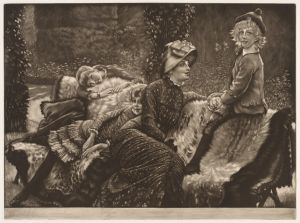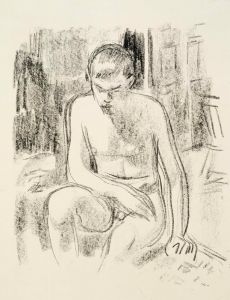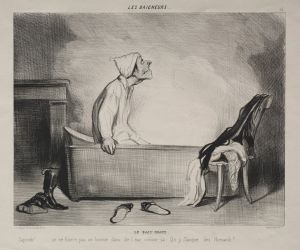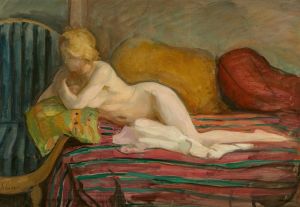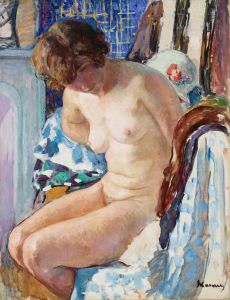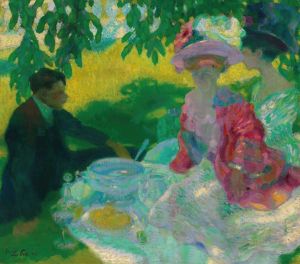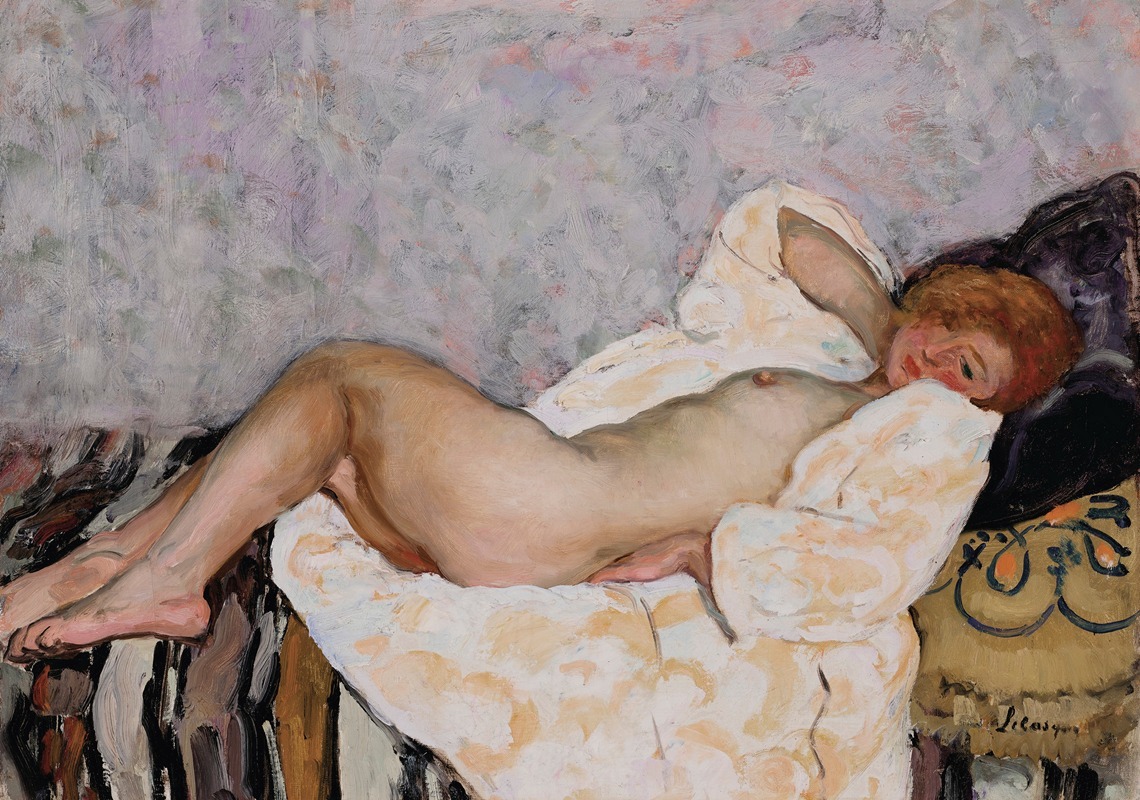
Nu allongé
A hand-painted replica of Henri Lebasque’s masterpiece Nu allongé, meticulously crafted by professional artists to capture the true essence of the original. Each piece is created with museum-quality canvas and rare mineral pigments, carefully painted by experienced artists with delicate brushstrokes and rich, layered colors to perfectly recreate the texture of the original artwork. Unlike machine-printed reproductions, this hand-painted version brings the painting to life, infused with the artist’s emotions and skill in every stroke. Whether for personal collection or home decoration, it instantly elevates the artistic atmosphere of any space.
Henri Lebasque (1865-1937) was a French post-impressionist painter known for his vibrant use of color and light. One of his notable works is "Nu allongé," which translates to "Reclining Nude." This painting exemplifies Lebasque's mastery in capturing the human form with a sense of intimacy and warmth.
Lebasque was born in Champigné, France, and studied at the École des Beaux-Arts in Angers before moving to Paris in 1886. In Paris, he worked as an assistant to Ferdinand Humbert and was influenced by the works of Pierre Bonnard and Édouard Vuillard, members of the Nabis group. Lebasque's style evolved through his exposure to the Impressionists and the Fauves, leading to his unique approach that combined elements of both movements.
"Nu allongé" is a testament to Lebasque's ability to blend the softness of Impressionism with the boldness of Fauvism. The painting features a reclining female nude, a subject that has been a central theme in art history. Lebasque's treatment of the subject is characterized by his use of light and color to create a serene and inviting atmosphere. The figure is depicted with a sense of naturalism, yet the brushwork and color palette imbue the scene with a sense of modernity.
The composition of "Nu allongé" is carefully balanced, with the reclining figure occupying the central space of the canvas. The background is rendered in soft, muted tones, allowing the figure to stand out. Lebasque's use of color is particularly noteworthy; he employs a range of warm hues to highlight the contours of the body, creating a sense of depth and volume. The interplay of light and shadow adds to the three-dimensionality of the figure, making it appear almost lifelike.
Lebasque's approach to the nude is both respectful and intimate. Unlike some of his contemporaries who depicted the nude in a more provocative manner, Lebasque's "Nu allongé" exudes a sense of calm and tranquility. The figure appears relaxed and at ease, suggesting a moment of quiet repose. This treatment reflects Lebasque's broader artistic philosophy, which emphasized the importance of capturing the beauty and harmony of everyday life.
Throughout his career, Lebasque remained committed to exploring the possibilities of color and light. His works often feature scenes of domestic life, landscapes, and portraits, all rendered with a keen eye for detail and a deep appreciation for the subtleties of human experience. "Nu allongé" is a prime example of his ability to convey emotion and atmosphere through his art.
Lebasque's contributions to the art world were recognized during his lifetime, and he exhibited regularly at the Salon des Indépendants and the Salon d'Automne. Today, his works are held in numerous public and private collections around the world, and he is remembered as a key figure in the development of modern French painting.
In summary, "Nu allongé" by Henri Lebasque is a significant work that showcases the artist's skill in combining the influences of Impressionism and Fauvism. Through his use of color, light, and composition, Lebasque creates a painting that is both visually striking and emotionally resonant, capturing the timeless beauty of the human form.





